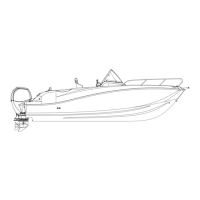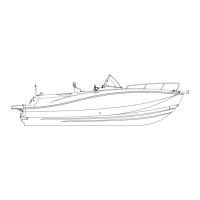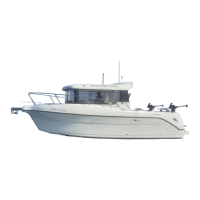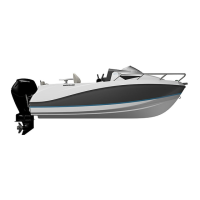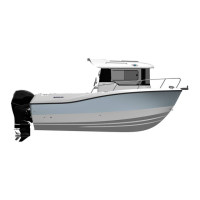Quicksilver 675OP — System & Component Overview and Operaon
18
The boat owner/operator shall:
1. Have the re ghng equipment checked at the intervals indicated on the equipment.
2. Replace portable re exnguisher, if expired or discharged, by devices of idencal re ghng
capacity.
3. Have xed systems relled or replaced when expired or discharged.
4. Ensure that the re ghng equipment is readily accessible when the boat is occupied.
5. Inform the members of the crew about the locaon and operaon of the re ghng
equipment, the locaons of discharge openings in to the engine space, and the locaons of
escape routes and exits.
6. Keep the bilges clean and check for fuel and gas vapors or fuel leaks frequently.
The re exnguisher is located in the cabin near the cabin entry door.
Never obstruct passageways to exits or hatches, obstruct
safety controls (fuel valves, LPG valves, electrical switches,
etc.) obstruct portable re exnguishers stowed in lockers,
or modify any of the cra’s system (especially fuel, LPG, or
electrical) or allow unqualied personnel to modify any of
the cra’s system.
Fire Exnguisher
Fire Exnguisher
5. Carbon Monoxide Monitor
Quicksilver® boats are equipped with carbon monoxide (CO) monitors in the cabin and enclosed
berths or staterooms. Carbon Monoxide is an odorless, colorless, and tasteless, extremely toxic gas
produced by engines, heaters, stoves or generators. When inhaled it combines with hemoglobin in the
blood, prevenng absorpon of oxygen and is unlikely to be noced unl the person is overcome.
Prolonged exposure to low concentraon or very short exposure to high concentraons can result in
asphyxiaon and death.
Symptoms of Carbon Monoxide poisoning include dizziness, headaches, ringing in the ears, nausea, or
unconsciousness. GET MEDICAL ATTENTION AS SOON AS POSSIBLE. These symptoms are oen
confused with seasickness or intoxicaon, so those aected may not receive the medical aenon
they need. The poisoning vicm’s skin oen turns cherry red. If CO poisoning is suspected, have the
vicm breath fresh air deeply. If breathing stops, resuscitate. A vicm oen revives, then relapses
because organs are damaged by lack of oxygen.
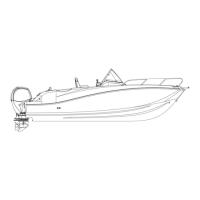
